
Rick310
-
Posts
697 -
Joined
-
Last visited
Content Type
Profiles
Forums
Gallery
Events
Posts posted by Rick310
-
-
You are making a nice start on the rigging!
Rick
-
Very nice, really coming along!
Rick
- Mark Pearse and Jack12477
-
 2
2
-
-
Beautiful hull, very impressive!
Rick
- Keith Black, Jack12477, FriedClams and 1 other
-
 3
3
-
 1
1
-
I was at Mystic about a year and a half ago. They were in the process of redoing the model ship gallery at that time. I’m sure it is on display now. Really want to see it.
Rick
- B-Ram and ClipperFan
-
 1
1
-
 1
1
-
Ed,
Do you recall from your research if Young America had ventilators?
Hope to see the model at Mystic, unfortunately it was not yet on display last time I was there. Your 3 volume series on building YA have been invaluable!
Rick
-
Rich, I suspect that Arthur Clark did not serve aboard the Flying Cloud, but was involved with the building of the model due to his extensive knowledge and experience, having served on clipper ships, although possibly not the Flying Cloud. This might explain the lack of first hand knowledge of the bow/naval hood as well as the ventilators.
-
Also, the model of the Challenge at the Smithsonian has both types of ventilators
-
WOW. Didn’t know that there was a second model of the Flying Cloud by Boucher. Very similar but differ with the studding sails. You are exactly correct that the Emerson ventilators were for air circulation of the holds and cabin spaces. The model in Boston lacks these ventilators as well.
I read about Arthur Clark’s involvement with the building of the model in a description of the model by the museum.
However, when I went to see the model, Arthur Clark was not mentioned. They did say, as I recall, that someone who had served on board the Flying Cloud had supervised it’s construction.
I hope to get back to Boston to get more photos of the model in the near future and will pay more attention to the description.
Rick
-
I understand that the planksheer ventilators were to allow air circulation in the air space between the frames, bounded by the hull planking on the outside, and the ceiling planking on the inside. The ceiling planking had air holes drilled into it to allow air circulation to prevent rot to the frames.
-
Clipper Fan, I just went back and looked at the pictures of the Flying Cloud in the Boston Museum of Fine Art and there is no evidence that there are ventilators in the plank sheet on the model. I understand that Capt Arthur Clark supervised the building of the model.
Of course, this doesn’t mean that there weren’t ventilators, probably were but just not modeled.
Whether or not the Flying Fish had gooseneck ventilators or straight is open to debate that hopefully further research will elucidate.
I believe that the gooseneck ventilators on the FF were chosen as the only known model that has them is the Challenge in the Smithsonian.I also keep in mind that the list of contributions to the FF plans by Ben Lankford is a very distinguished list, including Eric Ronnburg
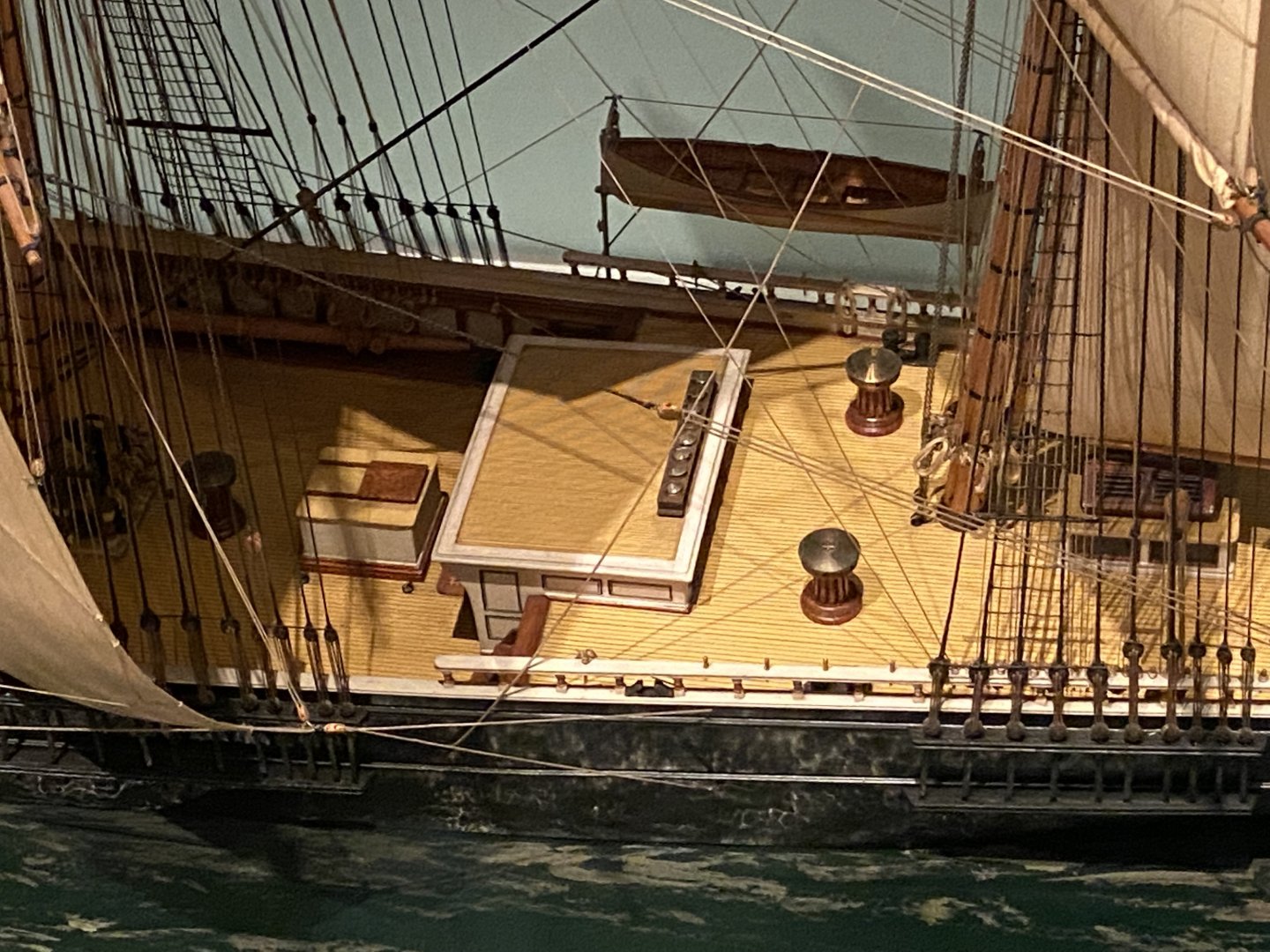
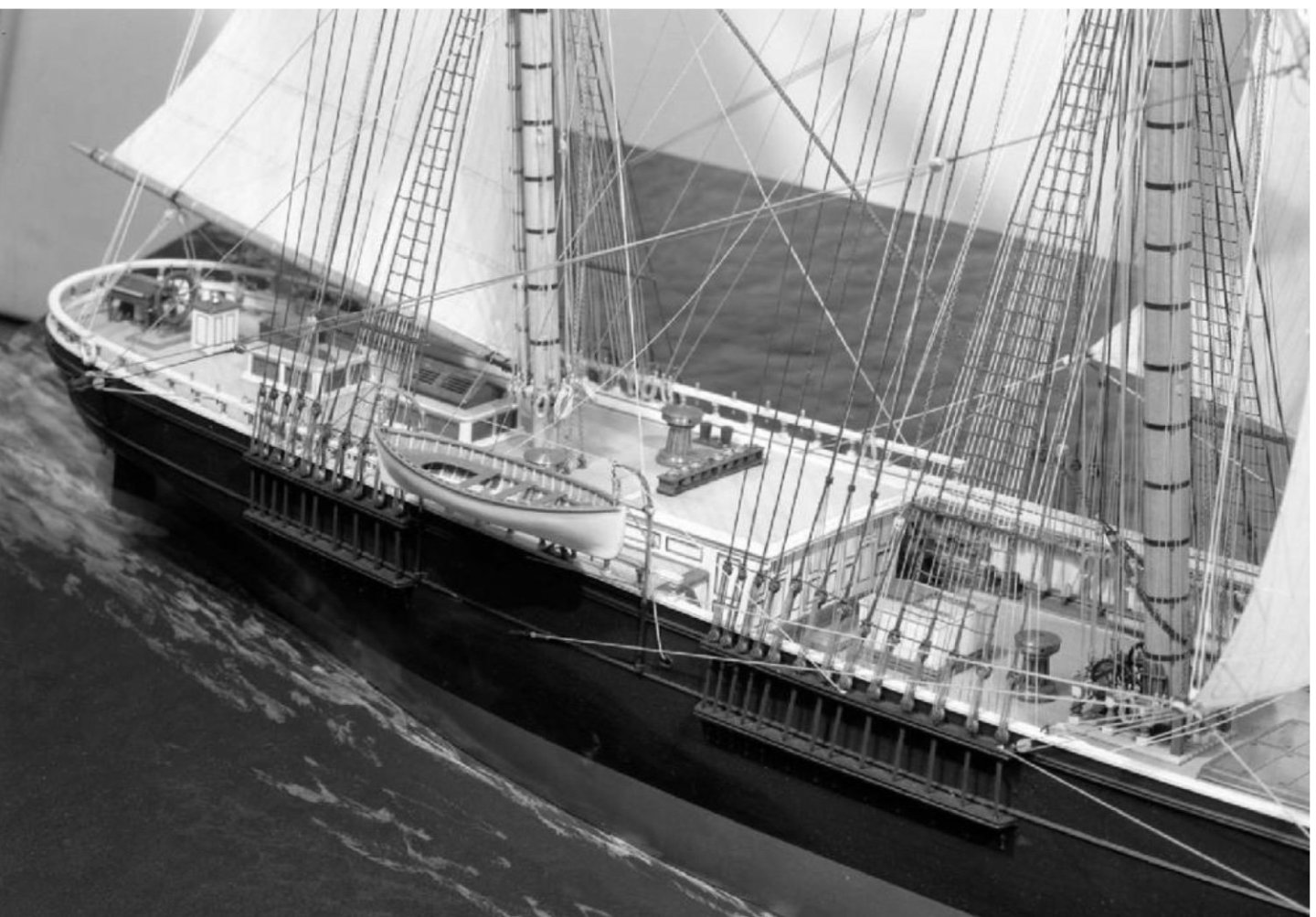
-
Completely agree with Rob, keep them black!
Rick
-
Rob , I agree with Rich that the ventilators in the planksheer would have some kind of valve(ball valve?) to prevent water from entering. The model of the clipper ship Challenge in the Smithsonian America History Museum
has what appears to be a Ball valve on the end of the ventilator. I have an old photograph that I will try to find and post it. It’s a large model possibly 1:48 inches scale. I didn’t try to replicate it.
Rick
-
-
Thanks George, in making them, I was constantly referring back to yours. You certainly set the bar and I don’t know if I reached it but I’m going with what I have. Your blog has been a great resource!
Rick
-
ClipperFan and Jared, thanks for your kind words and encouragement.
ClipperFan, I really appreciate your meticulous research on McKays’s clippers and your relentless efforts to be as accurate as possible. Your artistic skills are amazing! As you, Rob and Vlad know, keeping everything in scale and not letting items get to big and out of scale, is a big challenge.
Jared, I have been following your and George’s Flying Fish build and refer back to your 2 blogs frequently to see how you accomplished making various items. I also follow the steps you and George used for masting and rigging.
I intend to rig aft to forward, inside out and bottom to top.
Rick
-
I finished the mizzen topsail yard . This included the reefing blocks (2 mm blocks from Syren) and their tackles as well as the leach and buntline blocks. I also attached the chain halyard blocks and rigged their tackles as well.
I won’t finish attaching the chain blocks to the cross trees until I’m ready to attach the mizzen topmast. The topgallant chain sheets were also rigged.
I decided to add the bowlines per EdT and YA. These consist of a bridle threaded through a bullseye and he bowline’s standing end around the bullseye. The bullseyes were made on the lathe with boxwood and an appropriate diameter o.070. The hole in the bullseye is a #71 micro drill. The line is .008 , also from Syren. The lines for the lower yards will be .012 and thread for the upper yards.
I finally got the main and fore lower masts made. This took 5 attempts to get 2 masts. The first 2 , the central spindle was 2 big, 1/4 inch square with the fish being 1/8 inches. When rounded and tapered on the lathe, the chapels came out too small.
These were remade per George (GAK 1965). I made the central spindle 3/16 inch as well as the fish . When turned on the lathe, the mainmast came out acceptable, but the fore was not. Apparently not centered well enough.
My last attempt on the fore mast came out pretty good. I noticed that the chapels on my masts are not as pronounced as on George’s FF. This maybe due to the tapering, from 13/32 to 10/32 apparently.
Also added various eyebolts and blocks on the deck around the masts.
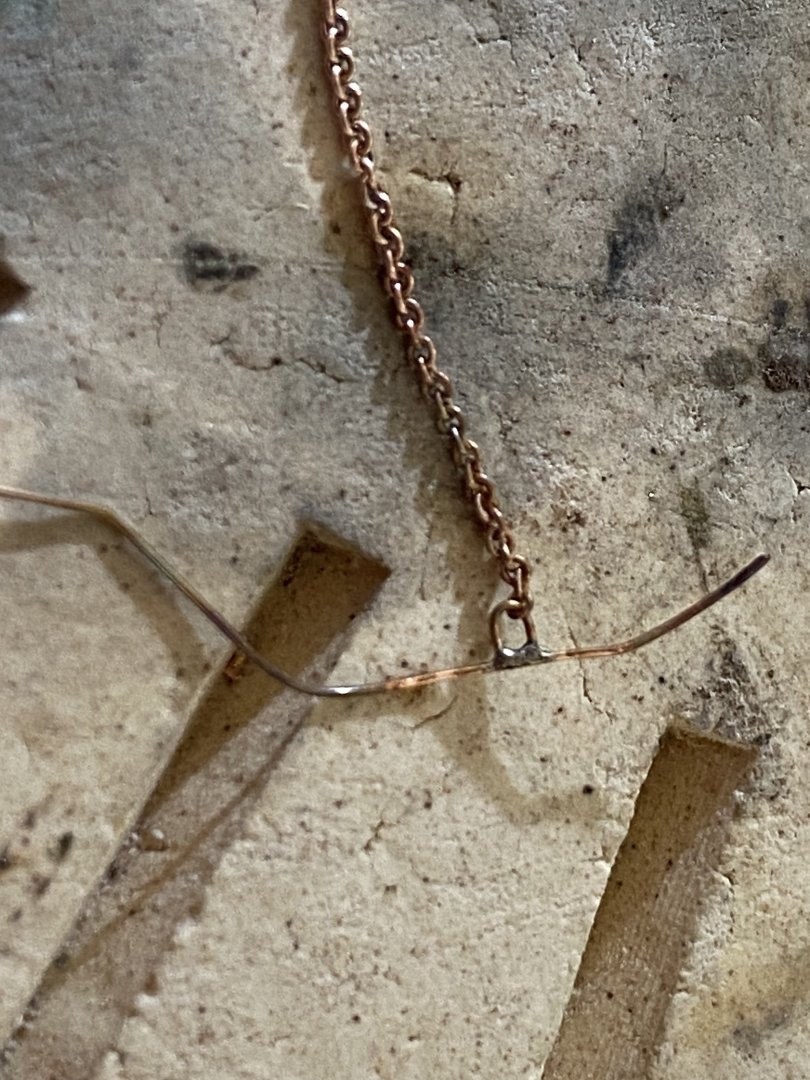
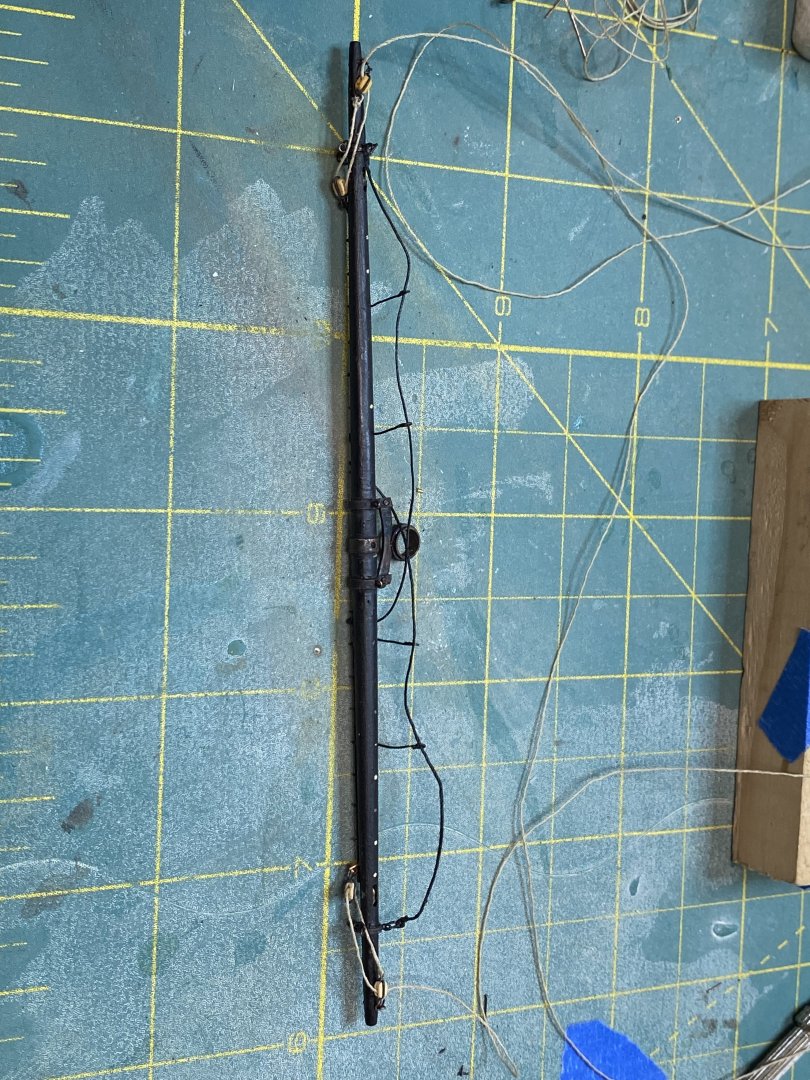
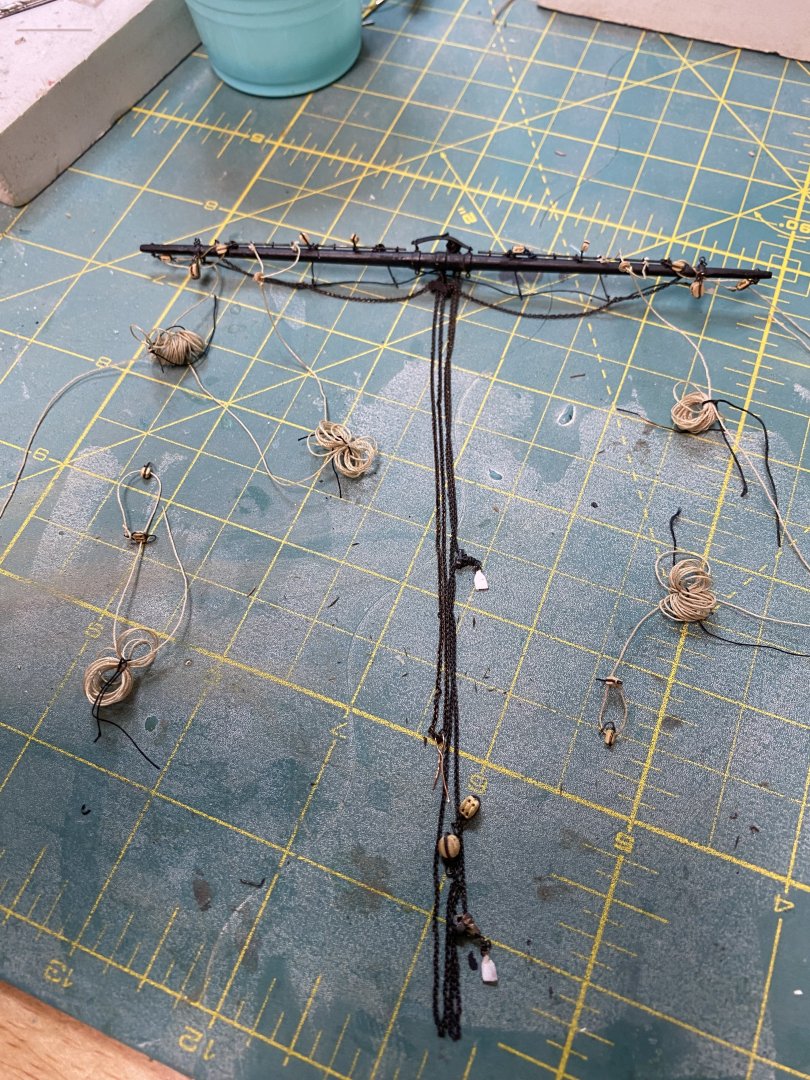
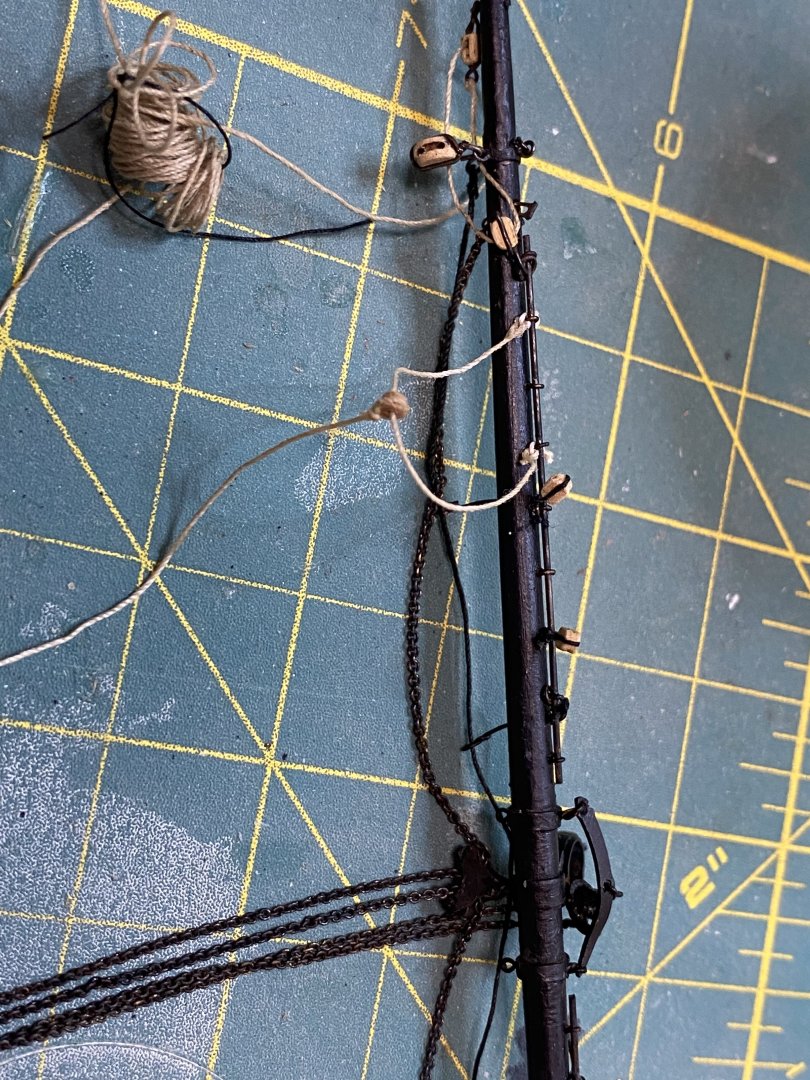
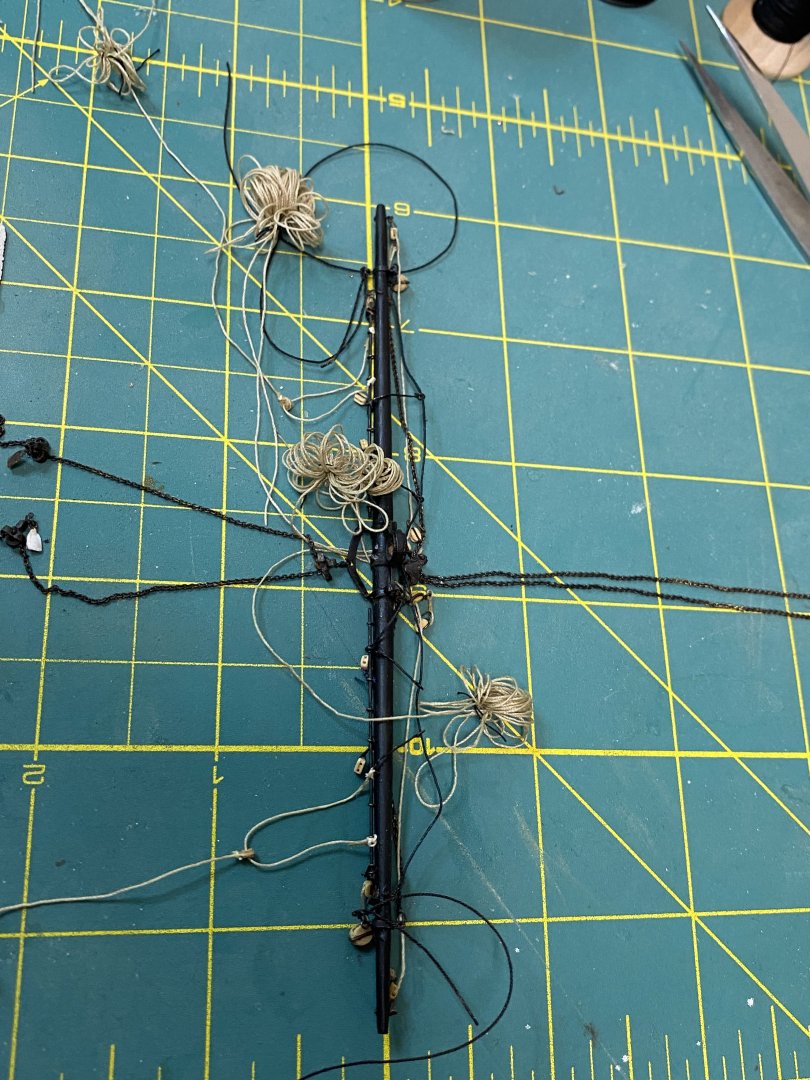
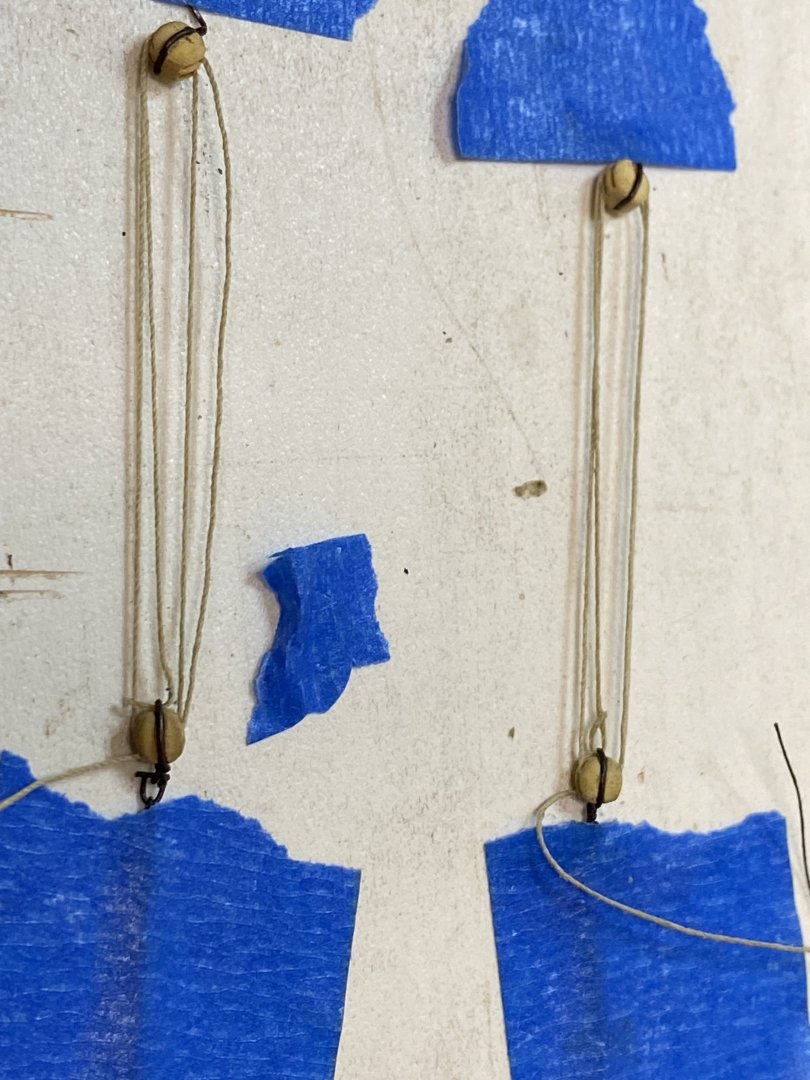
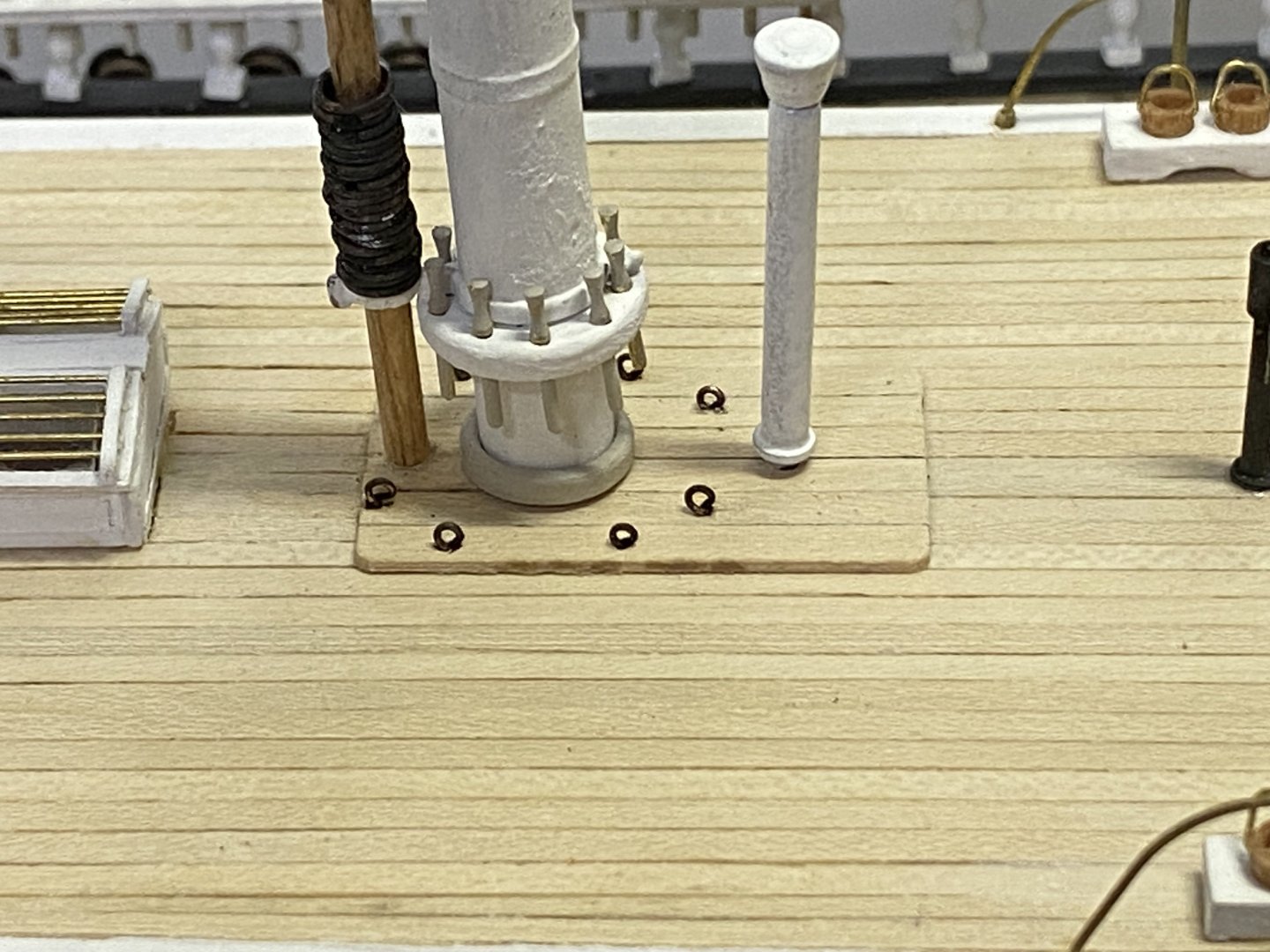
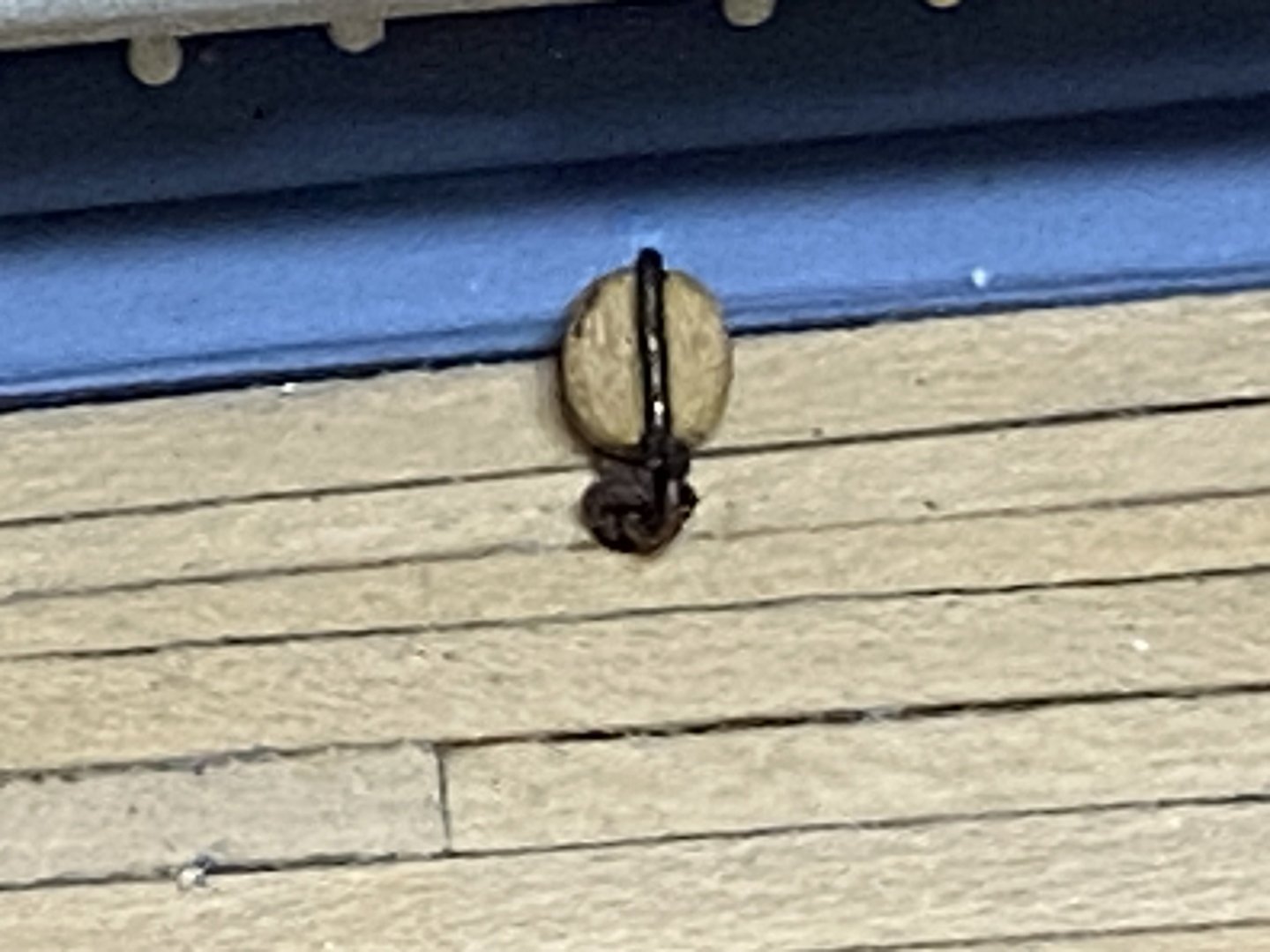
-
-
Have to love autocorrect 😁
Rick
-
-
Do the fore bitts and fife rail support the main stay as on as on the Flying ? If so, the bitts would have to be substantial and no wenches
Rick
-
At this scale, round seems reasonable.and more easily reproduced.
Better a slightly inaccurate representation than a bunch of differing octagonal shapes.
Rick
-
Really looking good Keith. The compensation plate is really well done!
Rick
- Keith Black, KeithAug, Ian_Grant and 3 others
-
 6
6
-


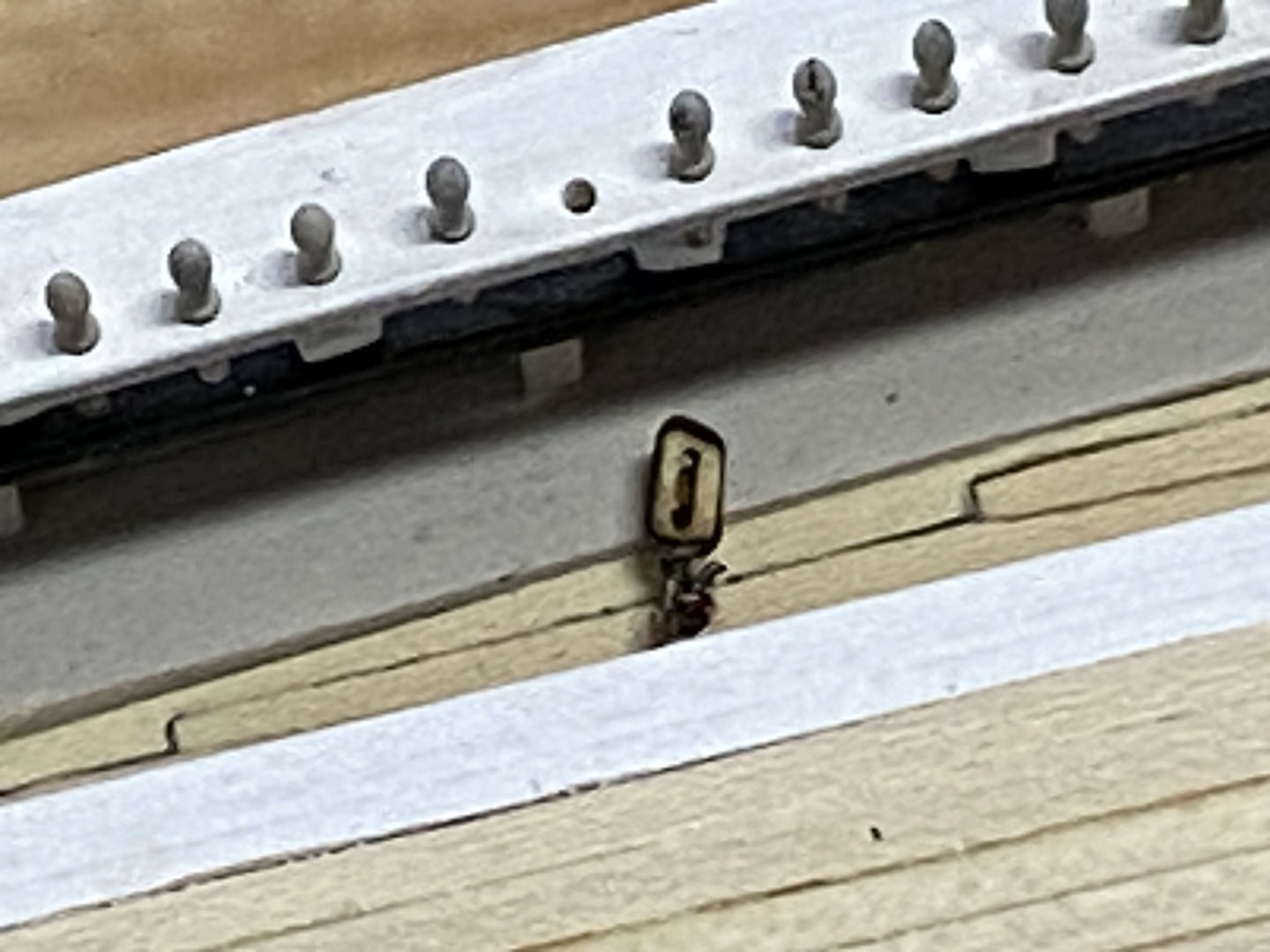
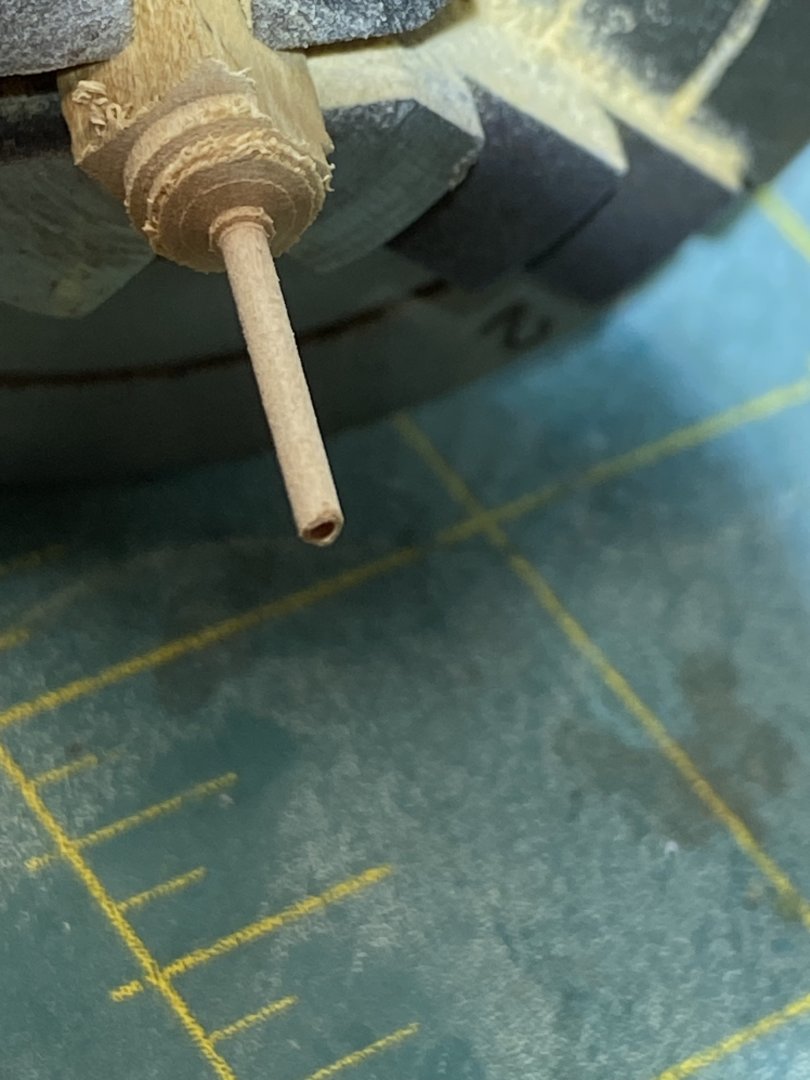
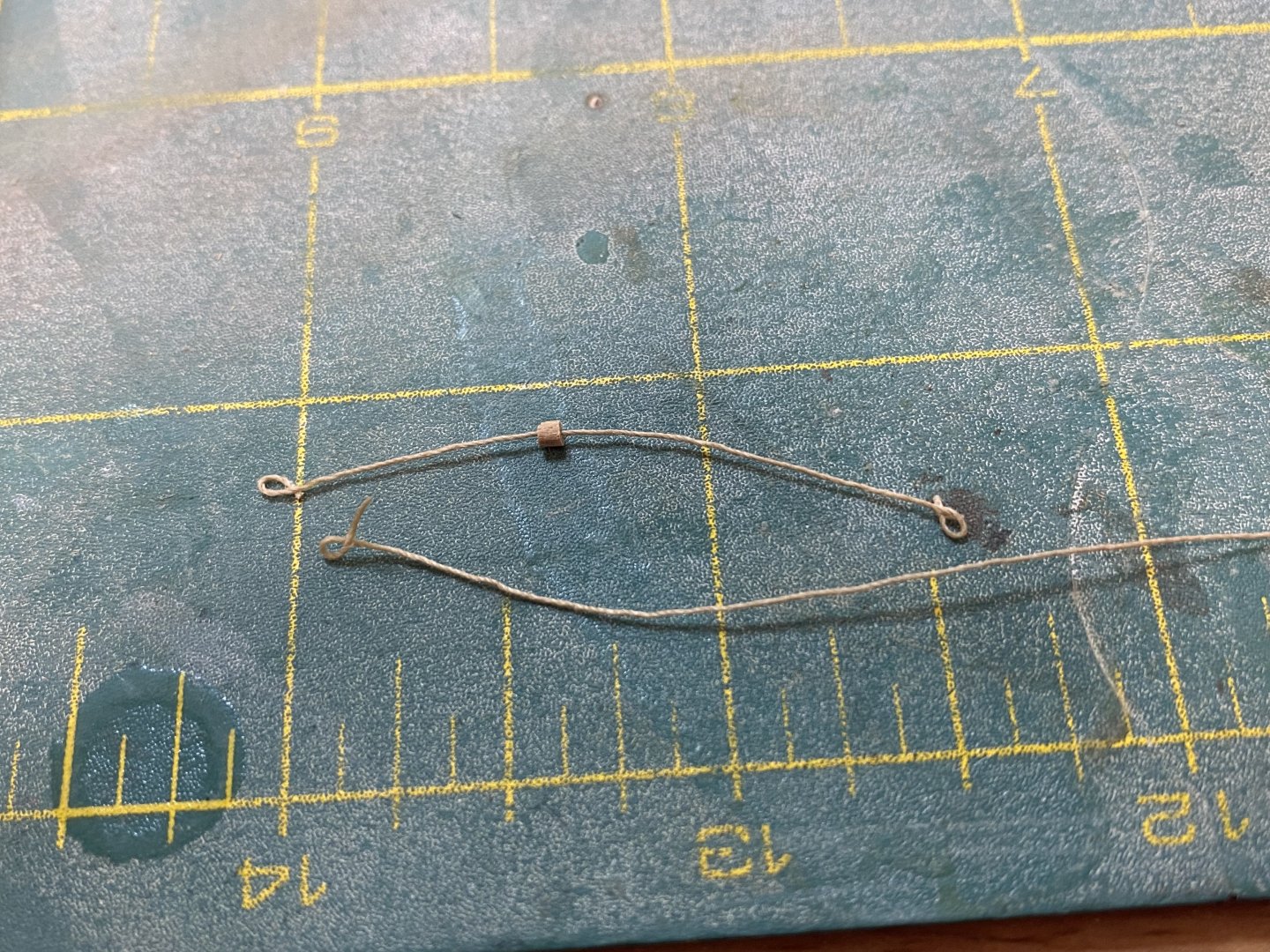
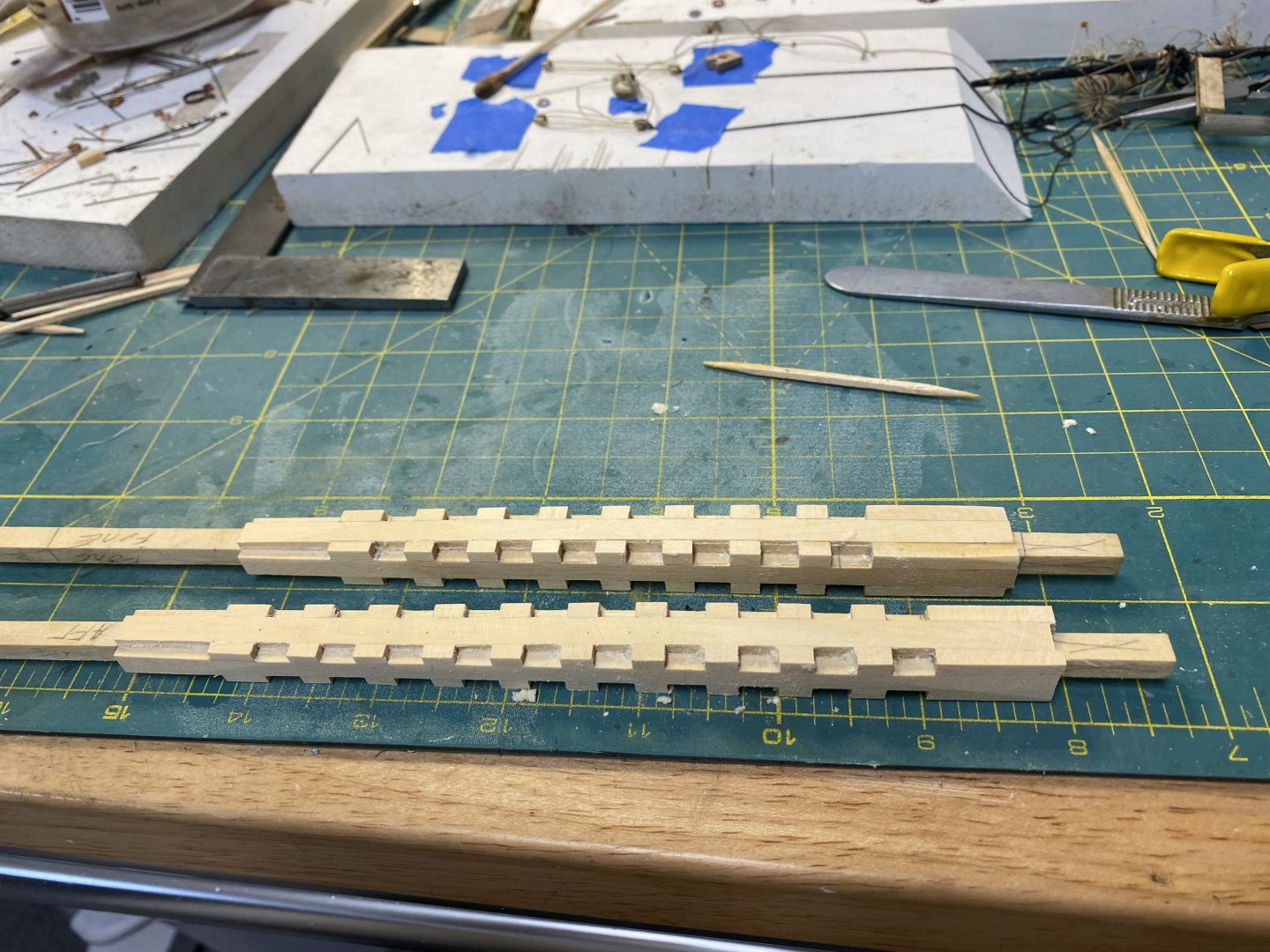
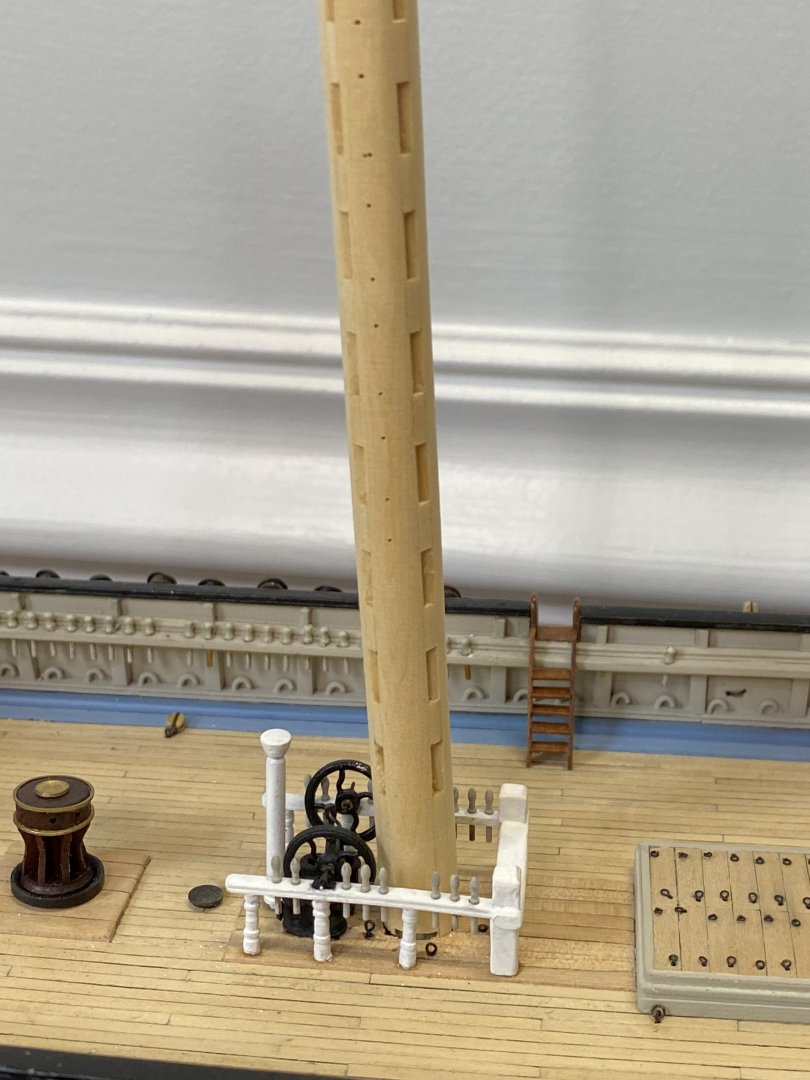
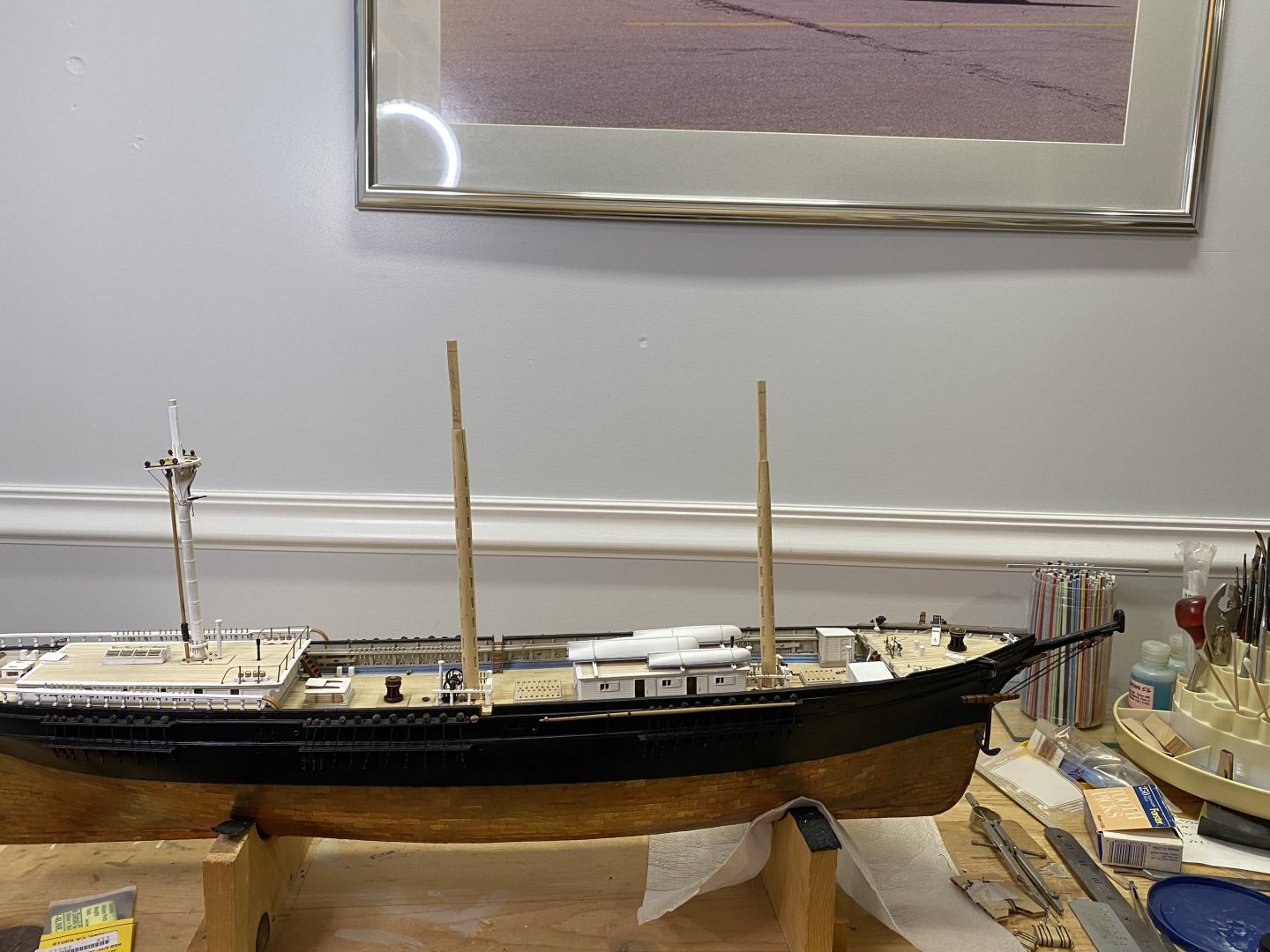
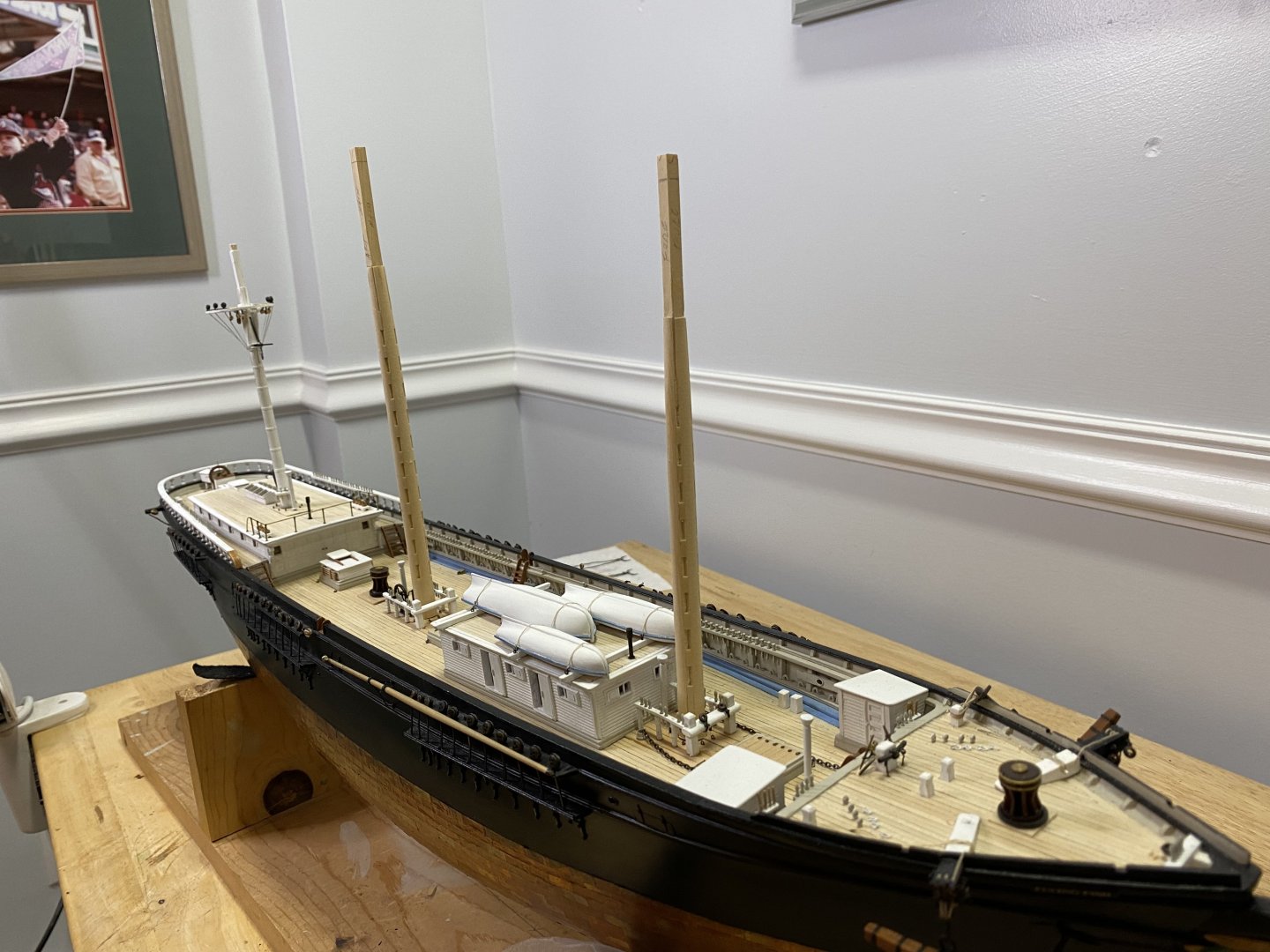

Cangarda 1901 by KeithAug - Scale 1:24 - Steam Yacht
in - Build logs for subjects built 1901 - Present Day
Posted
Your a brave man Keith, but a man’s gotta do what a man’s gotta do.
Cangarda’s really looking great!!
Rick